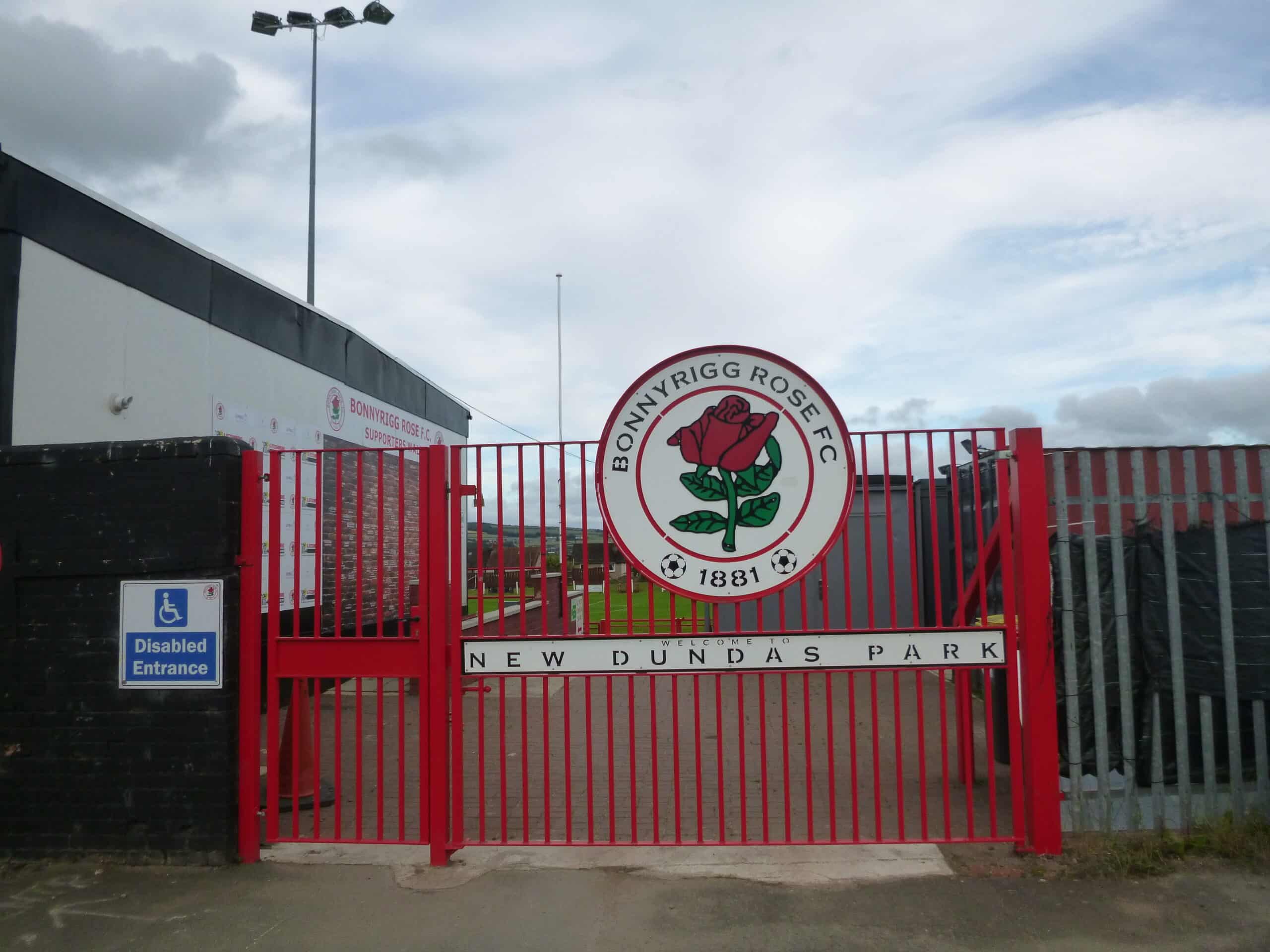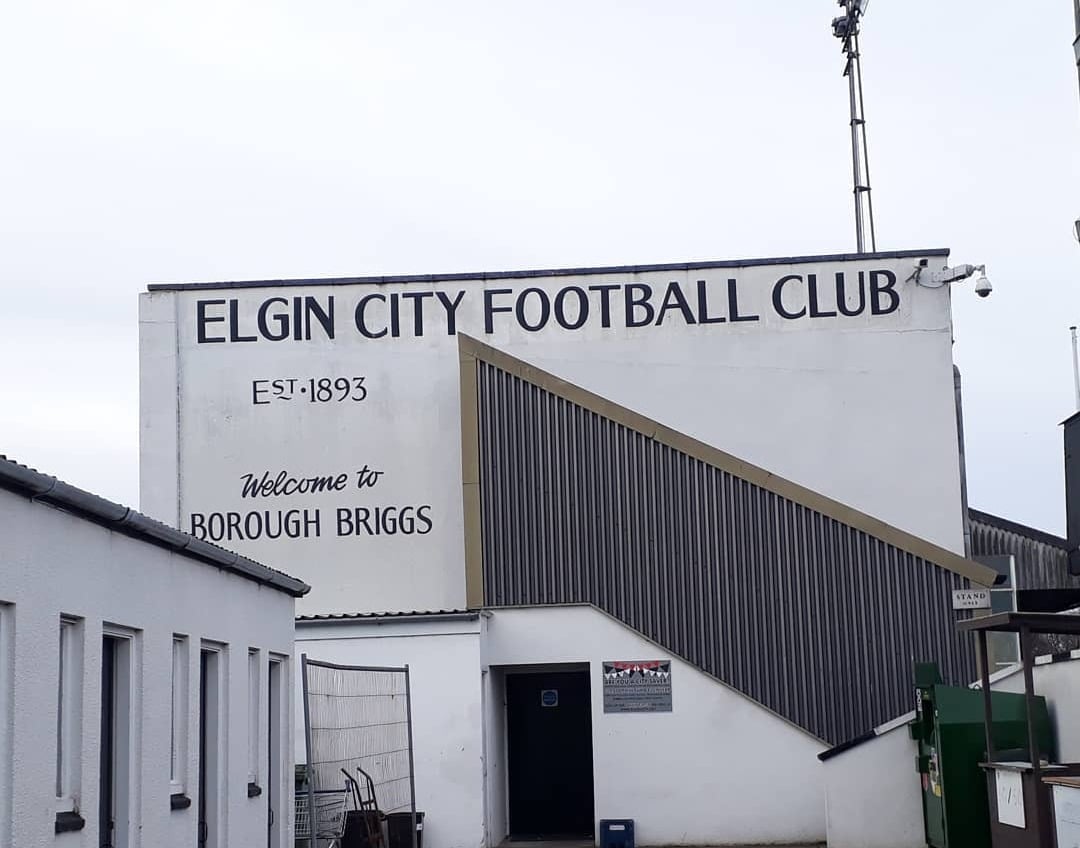A fan’s guide – the club from early doors to today
Many clubs have a certain year as their iconic date. For Berwick Rangers, this is 1967. That January, a team of part-timers beat the great Glasgow Rangers 1-0 in what is considered to be the greatest upset in the Scottish Cup. A record 13,365 crammed into Berwick’s Shielfield Park expecting the holders and record Scottish champions to walk over the Wee ‘Gers.
Mud, luck and frustration helped keep out a team of nine internationals – along with Berwick goalkeeper and player-coach Jock Wallace. An old-school manager who would soon join Glasgow Rangers and lead them to three league titles, Wallace had signed to Berwick in the 1950s when doing his military service with the King’s Own Scottish Borderers.
Back then, Berwick had just gained full league status. The move up to the Scottish Division Two came in 1955, the Black & Gold having spent the previous 70 years playing in Northumberland and Scottish Border leagues according to whim and circumstance. Based in a Tweedside town that had changed hands between England and Scotland several times over the centuries, the status of Berwick Rangers, founded in 1884, was always going to be a bit of an anomaly.

It was in the early 1950s that manager John Thompson rallied supporters, councillors and the town mayor to get behind a club that could compete in the Scottish League. In 1954, Berwick were drawn against Rangers in the Scottish Cup and trainloads of fans headed for Ibrox to swell the 60,000 crowd.
Soon after, Berwick settled at their Shielfield Park ground and claimed the league status they held onto, tooth and nail, until 2019. The Borderers even faced Rangers again, this time in the semi-final of the League Cup at Hampden in 1963.
The famous meeting of these same two sides in 1967 had more than just a giantkilling element about it: Glasgow Rangers had been trying to persuade Scotland’s footballing authorities to shrink the size of the then single-tier lower division and so condemn the likes of Berwick to Border League obscurity. That day, the 11 men in black and gold were playing for more than a place in the next round.

The game’s only goal came from inside-forward Sammy Reid, whose other claim to fame was being Bill Shankly’s first signing for Liverpool in 1960. Only hired as player-manager two months before, Jock Wallace, monstered anything that moved in the penalty box, breaking Willie Johnston’s leg and urging his men on to keep out Rangers until the final whistle.
The 1-0 scoreline still resonates today. Few remember the next round, another tight 1-0 finish featuring heroics (and a penalty save) from Jock Wallace – and a win for Hibernian, in front of 30,000-plus at Easter Road.
A league restructuring did come into place, in 1975, seeing Berwick slip from the second to the newly created third tier, where they stayed until winning the division under the club’s former midfielder Dave Smith four years later. Smith, who had played for Glasgow Rangers that day in 1967, kept Berwick up for one season but left after a poor start to the 1980-81 campaign.
The following three decades saw this pattern repeated, of bright spells under a mercurial manager (Jim Jefferies, Paul Smith, John Coughlin) interspersing long seasons of financial struggle.

Under Paul Smith, the Borderers almost gained two promotions in consecutive seasons, a third place in the third tier in 2000-01 the high point, as well as holding Hearts to two close games in the Scottish Cup. The following season, in echoes of 1967, Berwick kept Glasgow Rangers to 0-0 at Shielfield Park before losing 3-0 at Ibrox.
Smith left in 2004 after seven commendable years. New York-born Coughlin, a former Berwick right-back, then took Berwick on a record-breaking winning run in 2006-07 that ended with the Division Three title. Way out of their comfort zone in the third tier, Berwick won three games all season and conceded 100+ goals to sink straight back down again. Later that year, 2008, a supporters’ trust took over the club.
Gate money picked up with the demise of Glasgow Rangers, demoted to the lowest tier in 2012-13, two league games at Ibrox attracting 95,000 spectators. Berwick even nipped in for a play-off spot that May, only to lose by a 119th-minute goal at East Fife.
Rangers’ last major fling in the Scottish Cup came under former Scottish international Colin Cameron, who spent just over a season at Shielfield Park before dropping out of the game for a while. His Berwick side edged forward to the quarter-finals of the cup in 2014-15. A 4-0 defeat at Hibernian, before 11,500 at Easter Road, furnished the club with some much-needed revenue.
Coughlin returned to Shielfield Park in November 2015, Berwick performing creditably if without reward in the familiar surroundings of fourth-tier League Two.







Ground Guide
The field of dreams – and the story behind it




Berwick’s home for most of their history, Shielfield Park still retains its oval shape from yesteryear – and main stand from Bradford City, bought for £400 in 1951. With the club joining the Scottish League in the mid-1950s, improvements were needed to the basic ground.
Some 3,000 turned out for Shielfield’s official opening in 1955, a 3-2 defeat in a friendly to Darlington. Opposite the main stand, the Ducket side, named after the dovecots behind it, was revamped in the early 1960s.
Speedway arrived here in 1968, the cinder track still used today.
Despite gradual improvements, the main stand becoming all-seated in 1980, Shielfield fell into the hands of the borough council, though the club regained a 21-year lease in 1988.






Only a year later, lack of modernisation forced Berwick to play home games out town, setting a grim precedent repeated in 1991-92.
Speedway returned, the club’s situation improved and an initiative by the supporters’ club in 2007 saw the main stand refitted with yellow seating.
Average crowds at Berwick are in the 500 range, home and away fans in the main stand in sections 3-5 and 1-2 respectively – although segregation isn’t strict. The Ducket remains, a small roofed stand over the halfway line. Each end is left open.
Capacity is 4,100, 1,300 seated.
getting here
Going to the ground – tips and timings

The ground is on the opposite side of the Tweed to town – and the train station. It’s a good 20-25min walk from station via town and the Royal Tweed Bridge. A taxi shouldn’t be more than £6.
Perryman’s buses 67 or 267 direction Galashiels/Wooler) runs from the station to the stadium. The 32 runs from the station down the main road to the stadium, stopping at a nearby Asda. The B2 (direction Prior Park) also calls at a nearby retail park – it sets off from a little further round the station concourse on Railway Street.
These services are pretty infrequent on Saturdays though you should find at least one bus departing within 30mins as you come out of Berwick train station.
getting in
Buying tickets – when, where, how and how much


Berwick have a simple pay-on-the gate, cash-only system on match days, different queues for adults (£12) and concessions (under-16s, unwaged, OAPs, £7).
Arrangements may differ should Berwick draw a big name in either of the cup competitions. The home tie with Glasgow Rangers in 2002 was an all-ticket affair.
By the same token, prices were reduced to £10/£5 and free for under-16s for the Scottish Cup border derby with Hawick in October 2016.
what to buy
Shirts, kits, merchandise and gifts

A club shop operates by the main stand on match days, proffering a modest selection of black-and-gold souvenirs, including old match programmes, polo shirts, beanie hats and baseball caps.
Where to Drink
Pre-match beers for fans and casual visitors



On the main road down to the ground from town, the Angel Inn (11 Brewery Bank) is a popular stop-off, with a pool table and the odd Berwick souvenir on the wall.
Right by the ground, the Black & Gold fills pre- and post-match with home and away fans, around a pool table and a big TV screen for running football news of a Saturday.
Behind the main stand, a van serves fish & chips, as fresh as they come.

















































